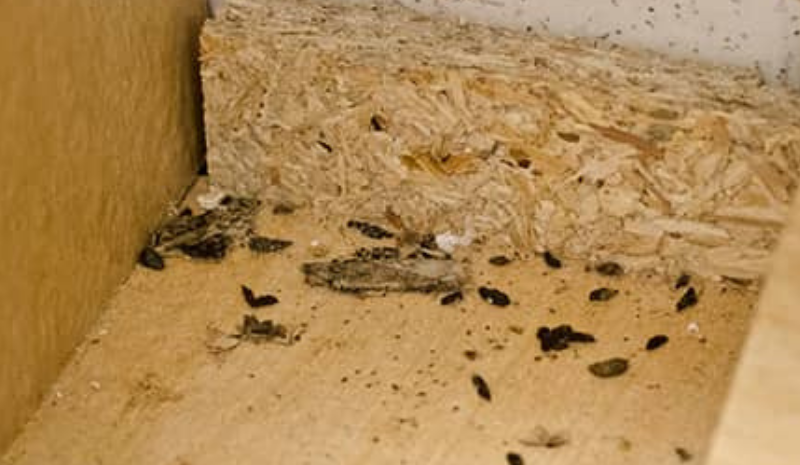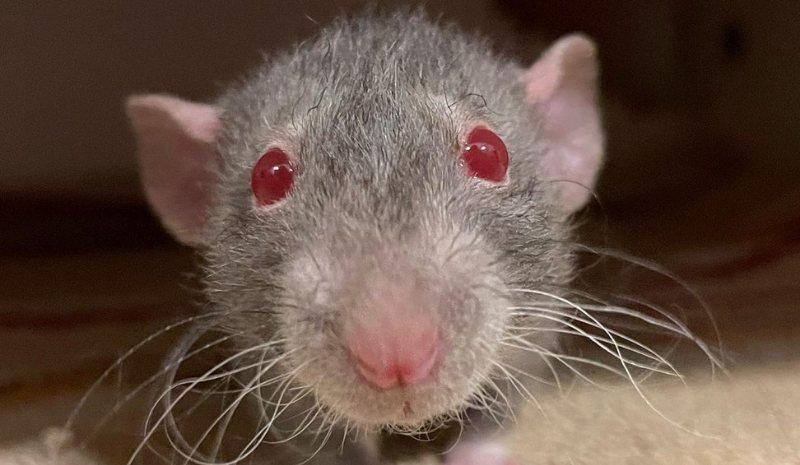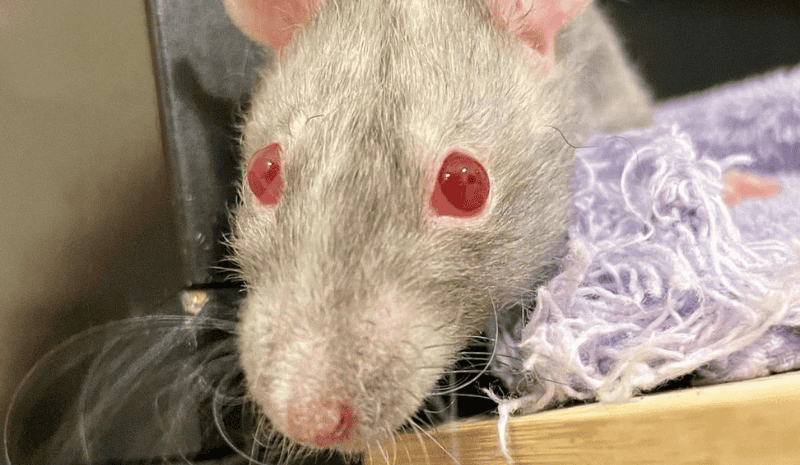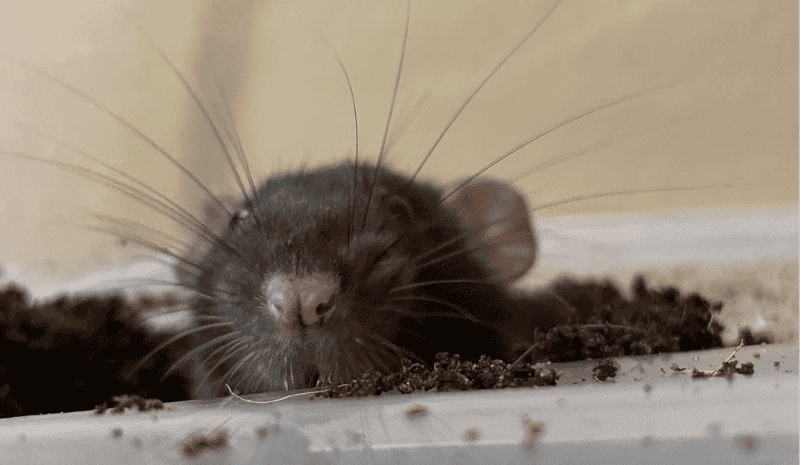Waking up at night from suspicious scratching sounds inside or noticing tiny, dark droppings on your walls? Then your sweet home could potentially be invaded by rats. Don’t panic, though. We’ll provide some tips on how to spot rat grease marks and how to tell if you have rats or mice. The thing is, rats are nocturnal creatures, which means spotting their signs is easier than spotting the actual furry invader. Keep reading this piece for more details on identifying rat smear marks (also referred to as rub marks). Also, find some advice on taking firm and quick steps to repel the nasty dirt-lovers, nighttime squeakers, and disease carriers.
The Complete Guide to Identifying Rat Smear Marks
If you’ve seen smudges and blackish marks on your bathroom floor or in the attic, then it looks like the pesky rodents have chosen your home’s objects and surfaces to rub against. Read on for more about rats and mice and figure out what it all means.
Why Rats Leave Grease Marks

[wpsm_titlebox title=”Why Rats Leave Grease Marks?” style=”main”]
Outdoors, rats hang out in the dirtiest nooks and crannies imaginable. From trash cans to the murkiest, dampest, and filthiest holes under buildings, getting dirty is the natural thing of these pesky rodents. As a result, they ‘rock’ the disgusting and oily grease left on their bodies and limbs. In addition to this, rats’ eyesight is awful. As compensation, they tend to brush themselves up against walls to pave their way. When moving, rats leave behind dab-like smudges and dark marks that stain your home surfaces. These streaks are very dark when fresh and tend to get lighter over time.
[/wpsm_titlebox]
Next to the smear marks, you may additionally find rodents’ paw imprints and tail drag traces. Over time, all this filth is sure to stain your walls. Aside from the blackish grease marks, you’ll also probably notice droppings and trails of urine wherever these filthy creatures navigate. Rats’ urine gets yellow when stale and is somewhat blue when fresh. The dirty troublemakers love making themselves at home, staying where they are, defecating and urinating there randomly. Yuck!
Here are some more strong indicators of rodent invasion:
- burrows: rats are active diggers, that’s a fact;
- nests: you may find rat nests in areas of your dwelling where you don’t regularly go, e.g., crawl spaces or attics;
- scratches and squeaks at night: rats are sneaky, but they are definitely not quiet, especially during nighttime;
- hyperactive behavior patterns in pets: if your pet is suddenly agitated and hunting for something, then chances are your cat or pup has sniffed out a filthy furry creature somewhere near.
[su_youtube url=”https://www.youtube.com/watch?v=96DtJvTmB1M”]
Where Rats Leave Smear Marks In Your Home
Rodents can leave their presence marks in various places, both open and covert. If you think you’ve seen fresh rat poop in your home and suspect that you have stinky and furry uninvited guests, make sure you check your walls, moldings near the floor, and the behind-furniture areas for rat grease smudges. You can also discover those dirt dabs around your basement, storage room, or attic. In other words, these nasty rodents leave smear stains anywhere dark, filthy, wet, and cluttered.

What To Do If You Find Rat Grease Marks And Rat Feces In Your Home
Are you seeing nasty stains and tiny ugly droppings in your home? Then rats have definitely found your residence exciting and decided to share it with you without you knowing. Frankly speaking, making rats leave is a difficult task, so hiring a rodent control specialist would be your best bet. However, you may take some must-take steps to prevent the filthy rodents from finding their way to such essential areas in your home as your kitchen or bedroom. With that said, here’s a quick guide on how to do it:
- Seal small cracks and crevices in your house through which the furry and filthy uninvited guests may actively get inside.
- Empty your trash bins, and don’t forget to cover them when not in use.
- Use flour or cornstarch in places where your rat invaders may hang out to detect their paw marks.
- Apply peppermint oil where dirt lovers may hide. They won’t like it, but make sure you or your family members are not allergic to it.
- Learn how to set rat snap traps and take action (that’s only if you prefer dealing with the rodents under your own steam).
- Contact a professional rodent control service.

Frequently Asked Questions
Have questions left on the topic? You’re welcome to delve deeper into our answers to your most frequently asked questions. Chances are you’ll find everything you need to know there.
When Іs It Wrong to Use Rat Grease Marks Disinfectant in a House?
Use it only when you’re 100% sure you have a rat problem. Also, avoid using it if you or your family members are allergic to its components. A few words about baits: you should remember that rat baits are usually flavored to attract rodents. It means your pets or even children can accidentally eat the thing and get poisoned. With that said, using disinfectants or baits in a house is good only if you’re entirely sure it won’t harm you or your loved ones.
What Precautions Should a Person Take When Using Rat Grease Marks Disinfectant?
When using a rat grease marks disinfectant, make sure you put on such protective gear as a mask and a pair of rubber gloves. It will prevent you from inhaling the dust and the distinct smell when working on getting rid of the nasty rodents.
How Do I Clean My House After a Rat Infestation?
The best way to clean your house once you figure out how to identify rodent droppings is by using a professional disinfectant. Spray it on the affected surface and leave it for up to fifteen minutes before wiping it all off with a cloth. Declutter the areas in your house where your rodent invaders may be hiding.
Bottom Line: Take Prompt Action
Rodent rub stains inside your home are a loud and clear indicator of a rat attack. If you notice them in your home, getting rid of rodents should become your utmost priority. Why? Because rats spread salmonellosis and more than 30 other diseases to people. You don’t want to take that big of a risk, do you?
To sum up, spotting a rat or mice problem at home is fairly easy. Now that we’ve answered your ‘What do mice grease marks look like?’ question, it’s time for you to take action and turn to a reliable rodent control company. Professionals will help you solve the problem in a fast and effective way. Do you have anything to add on the topic? Speak up in the comment section below. We value your two cents greatly.
Also read:
[su_posts template=”templates/list-loop.php” posts_per_page=”5″ offset=”0″ order=”desc”]

